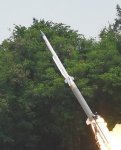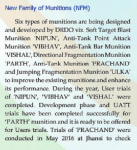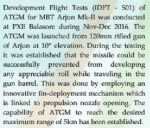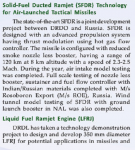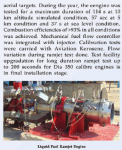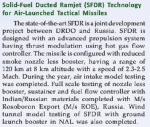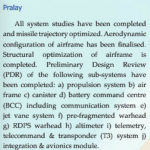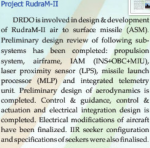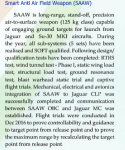Hi,Ofcourse - you can't start a Ramjet from the ground, the missile already needs to be in subsonic flight for the Ramjet to start functioning.
Ramjets, like Scramjets have no moving parts. There are no spinning blades like on a turbofan that force air into the chamber - air already needs to be moving at a certain rate through the chamber prior to ignition.
The test was SFDR which means it's a project meant to develop Ramjet propulsion for a variety of applications, although most probable use is for Astra Mk-2.

But in Air-to-Air application you don't need that huge booster because you are not starting from zero kph. The launch aircraft is already flying at speed. For any additional push, an integrated mechanism within the cumbustor takes care of that (like on Meteor).
Cryogenic cooling of onboard seeker is for IIR-guided missiles. And that's for two reasons:
1) Keeping the seeker cool increases its sensitivity against heat emissions from targets, not doing so would reduce sensitivity (as a result there hasn't been such a thing as uncooled IIR AAM for a long time).
2) IIR seeker has to stay 'on' for much longer periods than RF seeker. Some planes even use the seekers on IIR missiles as IRST while still attached to the pylon.
RF seeker stays 'off' for most of the time. Before launch, during launch and for a significant amount of time after launch, the RF missile is simply relying on the launch aircraft's radar. It's own seeker only comes online when it is already very close to the target - so the actual period where the seeker is online during a fire mission is all of a FEW SECONDS.
You don't need cooling for that. At least not for present generation of RF seekers which are of slotted-array type.
But once you move to AESA seekers (like on Japanese AAM-4B, Russian K-77M project and the new UK-Japan project for Meteor) then you might need liquid cooling.
Detailed comment. Me liky.
The ramjet duct can be seen dangling underneath the missile.
Yes you don't need the huge booster shown in this picture if the missile is launched from a moving aircraft.
This kerosene burner missile is too big by the looks of it. But that's a requirement for any internal combustion engines, it needs space and increases size and weight of carrying vehicle.
The cryogenic cooling you are on about Is usually very simple. It's just one or few small metal cylinders containing carbondioxide at incredible pressure. As the missile is fired the tiny cylinders are discharged and pressurised gas liquefy on release. The liquid gas provides cooling for a few seconds or tens of seconds before evaporation , and then the electronics heat up within tolerance brackets until impact.
But obviously flight times need to be few tens of seconds not more. More elaborate cooling systems cannot be used on Air to air missiles due to size and weight restrictions.
A ram jet is used for much longer flights.
I will wait for more details on the system.



 for max range of 300km.
for max range of 300km.
